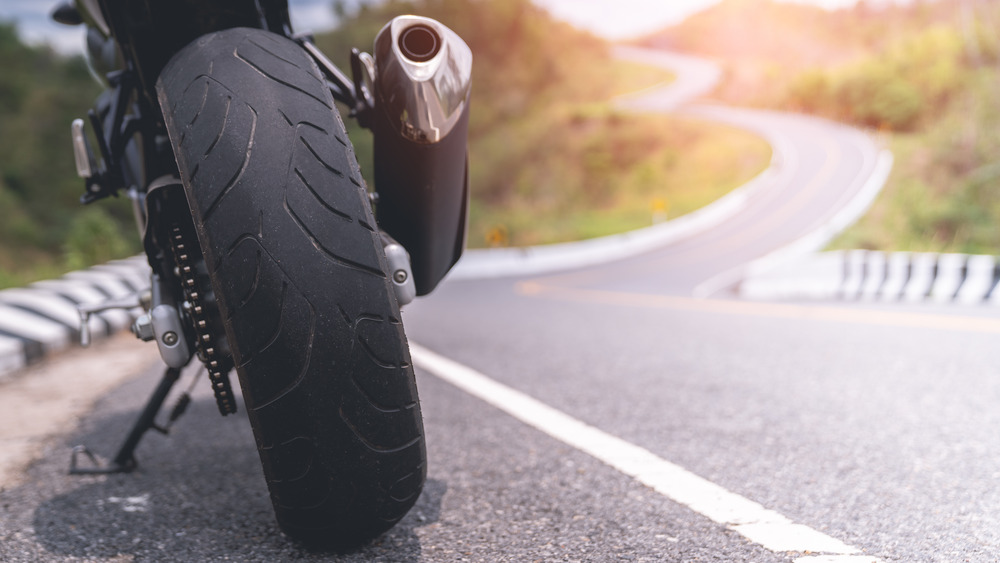Putting yourself into potentially fatal riding scenarios is not something you can practice. Yet, every time we go out to ride, we may find ourselves in such a situation.
Sergeant Ryan Austin, a police motorcycle instructor and owner of Advanced Rider Training, is also an accredited motorcycle collision analysis and reconstruction specialist. He told us that at many crash sites, there is no indication that the rider took any evasive action whatsoever. Why?
Keith Code of the C-Superbike School states that riders cannot exceed 75 percent of their personal limit while they learn a new skill, or they’re prone to panic. On the road, you can, without warning, encounter hazards that will blow you way past your limit. This probably explains the inaction often witnessed by Sergeant Austin. How do we practice overcoming the overwhelming panic that might result from encountering a logging truck around the blind side of a sharp turn? We can practice the motor skills needed to countersteer our bike past the hazard, but preventing the natural tendency to panic in life-threatening situations is not something so easily practiced.
One answer to this is mental imagery (also called visualization.) If you visually rehearse an action or event, you will mentally reinforce your physical skills AND strengthen your mental preparedness. Then, when you face a potentially fatal riding scenario, you can interrupt the automatic (subconscious) fight or flight panic response and substitute the correct action based on your training and visualization practice.
For motorcyclists, this is important for two reasons. Firstly, our automatic response is often opposite to the action we need to take, for example, if you enter a corner too quickly, your brain will tell you to chop the throttle. For your brain, slowing down means getting to a safer place, but according to Code, chopping the throttle will result in several undesirable effects like transferring weight forward and overloading the front tire, reducing ground clearance, preventing the bike from holding its line, and taking your bike out of its ideal suspension range. These, all caused by an inappropriate reaction, can cause all sorts of problems, including possibly crashing.
Secondly, mental visualization is important because motorcycling is a unique method of transportation. An easy ride on a sunny day can instantly turn into a life-and-death situation that requires practised skills, mental acuity, and the psychological mettle to handle the sudden hazard. Almost no other ride or sport instantaneously becomes life-threatening, but motorcycling can.
Many Olympic and professional athletes use mental imagery to improve their performance; they do it because it has proven to work. For motorcyclists, by visualizing life-and-death scenarios we can prepare ourselves to handle whatever we face on the street. We can prevent the fight or flight response, saving precious seconds so we can take immediate action.
For mental imagery to work, it has to be clear, precise, and accurate. You must know the correct motor response. Repeatedly visualized, it will create the same neural pathways as if you were doing live practice. As a result, the next time (possibly the first time) you encounter the imagined hazard on the street, you will be better prepared.
There are two types of visualization. Internal visualization is when you see things from your perspective, like doing the action and seeing it through your own eyes. If you’re visualizing running, you can feel your strides and the swing of your arms. External visualization is when you see yourself running across the finish line from an out-of-body perspective. To improve motor skills, it is internal visualization that works.
6 rules to help you get the most from visualization
- Choose a skill or situation that can easily be imagined.
- Make your visualization specific, accurate, and correct. You must know how to do it correctly before you can visualize. If you don’t know what to do, work with an accredited riding instructor or purchase a book on motorcycle riding. Make sure it is written by an accomplished and recognized motorcycle instructor. There are many YouTube videos teaching people how to ride by people who have, by their admission, just passed their licensing test. Avoid them.
- Visualize when you are focused.
- Visualize when you are relaxed.
- Create clear goals for your visualization.
- Make your visualization as close to the actual experience as you can. Use all of your senses. The efficacy of your visualization practice increases to the degree to which it is similar to the actual experience.
Although we can’t promise it will work for you, it has for this Riders Plus Insurance writer. Combining mental imagery with on-the-range motor skills practice has helped him handle many hazards. Had he panicked in any of these situations, he could have crashed. Instead, he dealt with them with the aplomb of a seasoned pro, thanks to visualization practice.
For motorcycling, mental rehearsal reinforces your motor skills AND improves your mental preparedness. Police, emergency responders, pilots, and the military get this training. If you are a motorcyclist, you can definitely make use of it too. You need to be able to respond to extreme danger with the calm-under-fire mindset that only preparation and training will give you, just like they do.
A short disclaimer: the concepts shared above is in no way meant to replace actual on-bike practice or professional instruction by a certified motorcycle instructor. The ideas and techniques discussed are based solely on personal experiences and what this Riders Plus Insurance writer has learned. He has used them to supplement the on-bike training and practice he does each year. The purpose of this article is so you might take something away that will help you become a better rider. But, make your own decision, perform due diligence, and do your own research. It can be said that people have tried these techniques in several sports, and they have proven to work for some. They have also proven to work for both Olympic and professional athletes, but we all learn differently. They may or may not work for you, especially if you have not had professional training or enough experience. So, use the information contained herein with caution, and always make sure you’re ready to ride!










join the conversation